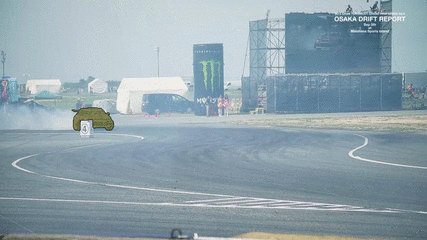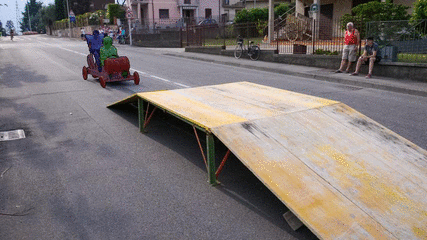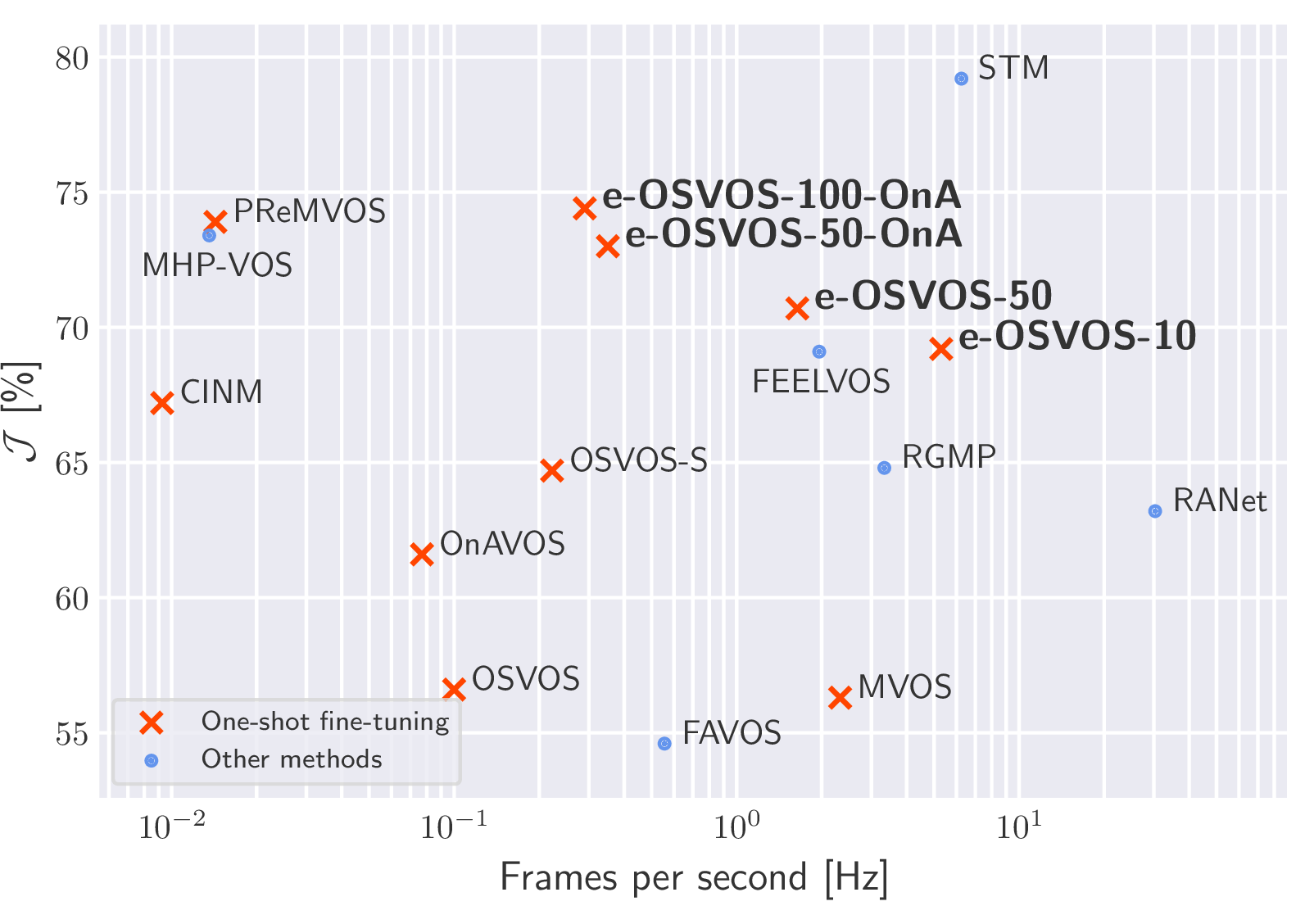This repository provides the implementation of our Make One-Shot Video Object Segmentation Efficient Again (Tim Meinhardt, Laura Leal-Taixe) paper and includes the training and evaluation code for our efficient One-Shot Video Object Segmentation (e-OSVOS) approach.
-
Clone and enter this repository:
git clone git@github.com:dvl-tum/e-osvos.git cd e-osvos -
Install packages for Python 3.7 in virtualenv:
pip3 install -r requirements.txt- Install DAVIS 2017 evaluation tool:
pip install https://github.com/timmeinhardt/davis-2017/archive/e-osvos.zip - Install PyTorch 1.2 and torchvision 0.4 for CUDA 9.2 from here.
-
Download and unpack datasets in the
datadirectory:- DAVIS 2016:
wget https://graphics.ethz.ch/Downloads/Data/Davis/DAVIS-data.zip unzip DAVIS-data.zip -d DAVIS-2016 - DAVIS 2017:
wget https://data.vision.ee.ethz.ch/csergi/share/davis/DAVIS-2017-trainval-480p.zip unzip DAVIS-2017-trainval-480p.zip -d DAVIS-2017 - For YouTube-VOS, register here and download the data into a
data/Youtube-VOSdirectory. Thesrc/generate_youtube_vos_splits.pyscript can be used to generate small random validation subsets of the training set.
- DAVIS 2016:
-
Download and unpack pre-trained e-OSVOS model files in the
modeldirectory:wget https://vision.in.tum.de/webshare/u/meinhard/e-osvos_models.zip unzip e-osvos_models.zip -
(Optional) Download and extract the Visdom training log files of the provided e-OSVOS model files into the
logdirectory.wget https://vision.in.tum.de/webshare/u/meinhard/e-osvos_visdom_logs.zip unzip e-osvos_visdom_logs.zip
In order to configure, log and reproduce our computational experiments, we structure our code with the Sacred framework. For a detailed explanation of the Sacred interface please read its documentation.
The training of e-OSVOS on meta tasks requires multiple GPUs. We implement a simultaneous meta learning on the training taskset and evaluation of multiple validation sets. The datasets and further configuration parameters can be found in cfgs/meta.yaml. In order to start a training run, we require an active Visdom server. The corresponding port and server parameters can be found in cfgs/torch.yaml.
The following command starts an e-OSVOS training with meta_batch_size=4 on the combined YouTube-VOS and DAVIS 2017 training sets and evaluates on the validation set of DAVIS-2017. The evaluation requires a single GPU and the computation of the meta batch is distributed among the remaining GPUs, i.e., at least two 12 GB GPUs are needed. The following run will be logged in the model directory and as Visdom environment with the YouTube-VOS+DAVIS-2017_some_descriptive_name_for_your_run name:
python src/train_meta.py with \
YouTube-VOS \
env_suffix=some_descriptive_name_for_your_run
To improve results on DAVIS, we further fine-tune e-OSVOS to each individual dataset, e.g., for DAVIS 2017 by running:
python src/train_meta.py with \
DAVIS-2017 \
env_suffix=some_descriptive_name_for_your_run_DAVIS_2017_TRANSFER \
meta_optim_model_file=models/YouTube-VOS+DAVIS-2017_train_dev_random_123/best_val_davis17_meta_iter.model \
meta_optim_optim_cfg.log_init_lr_lr=0.0
We provide the exemplary evaluation code for e-OSVOS-100-OnA with 100 initial and 10 additional online adaption fine-tuning iterations every 5 frames. We achieve our state-of-the-art results with a fine-tuning batch size of 3 and online adaptation which requires at least a 16 GB GPU:
python src/train_meta.py with \
DAVIS-2017 \
env_suffix=some_descriptive_name_for_your_run_DAVIS_2017_EVAL \
e-OSVOS-OnA \
num_epochs.eval=100 \
datasets.train.eval=False \
meta_optim_model_file=models/DAVIS-2017_train_seqs/best_val_meta_iter.model
Adjusting the command above allows for a reproduction of the validation set results reported in the paper. For YouTube-VOS the predicted output files (best_eval_preds subdirectory) must be submitted to the official challenge webpage.
| J | DAVIS 2016 | DAVIS 2017 | YouTube-VOS |
|---|---|---|---|
| e-OSVOS-10 | 85.1 | 69.2 | |
| e-OSVOS-50 | 85.5 | 70.7 | |
| e-OSVOS-50-OnA | 85.9 | 73.0 | 71.4 |
| e-OSVOS-100-OnA | 86.6 | 74.4 |
If you use this software in your research, please cite our publication:
@InProceedings{e_osvos_2020_NeurIPS,
author = {Meinhardt, Tim and Leal{-}Taixe, Laura},
title = {Make One-Shot Video Object Segmentation Efficient Again},
booktitle = {Advances in Neural Information Processing Systems (NeurIPS)},
month = {December},
year = {2020}}


